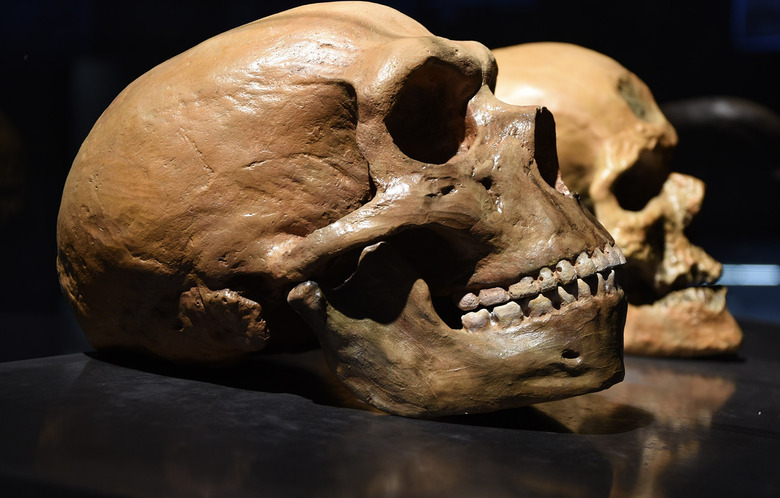Neanderthals Had Huge Brains And Ate A Lot Of Carbs
Neanderthals and ancient Homo sapiens were similar in many important ways, but it's long been believed that our ancestors thrived because of their ability to adapt, and in some ways control, a changing environment. Homo sapiens are often depicted as omnivorous hunter-gatherers, while Neanderthals are usually seen as being primarily savage hunters, feasting on meat and little else. Over the years, we've gradually learned that this wasn't actually the case, and a new study provides some stunning evidence that Neanderthals not only ate plenty of carbs from starchy foods, but they did it so often that it altered the bacteria in their bodies.
The new paper, which was published in Proceedings of the National Academy of Sciences, focuses on the dead bacteria locked away inside the teeth of over 120 Neanderthals dating back as far as 100,000 years. By observing and classifying the bacteria that were present in the mouths of these individuals, the researchers were able to paint a rather vivid picture of their diets.
Bacteria in our bodies make up what is collectively known as our microbiome. We have some degree of control over our microbiome based on how we live our lives. That is, if we eat certain things on a regular basis, the bacteria in our bodies that favor those types of foods will grow stronger and more numerous. The type, variety, and population size of the bacteria in our bodies can have dramatic impacts on our overall health, and understanding how microbiomes can affect everything from our weight to our moods is an area of study that is gaining a lot of momentum.
Of course, none of this helps the long-dead Neanderthals, but what their leftover microbes can tell us is how they lived their own lives, and in the case of the mouth bacteria in this new research effort, it offers clues about what they ate. As it turns out, the diets of pre-agricultural humans and Neanderthals were a lot closer than previously thought.
"We investigate the evolutionary history of the African hominid oral microbiome by analyzing dental biofilms of humans and Neanderthals spanning the past 100,000 years and comparing them with those of chimpanzees, gorillas, and howler monkeys," the researchers write. "We identify 10 core bacterial genera that have been maintained within the human lineage and play key biofilm structural roles. However, many remain understudied and unnamed. We find major taxonomic and functional differences between the oral microbiomes of Homo and chimpanzees but a high degree of similarity between Neanderthals and modern humans, including an apparent Homo-specific acquisition of starch digestion capability in oral streptococci, suggesting microbial coadaptation with host diet."
What this research shows, beyond the fact that Neanderthals and ancient humans ate very similar diets, is that they likely inherited many of these microbes from a common ancestor. When the family tree split, with Neanderthals and Homo sapiens evolving along two different paths, they didn't stray too far from one another. Carb-rich diets, cooking, and starchy vegetables were part of the lives of both species.
